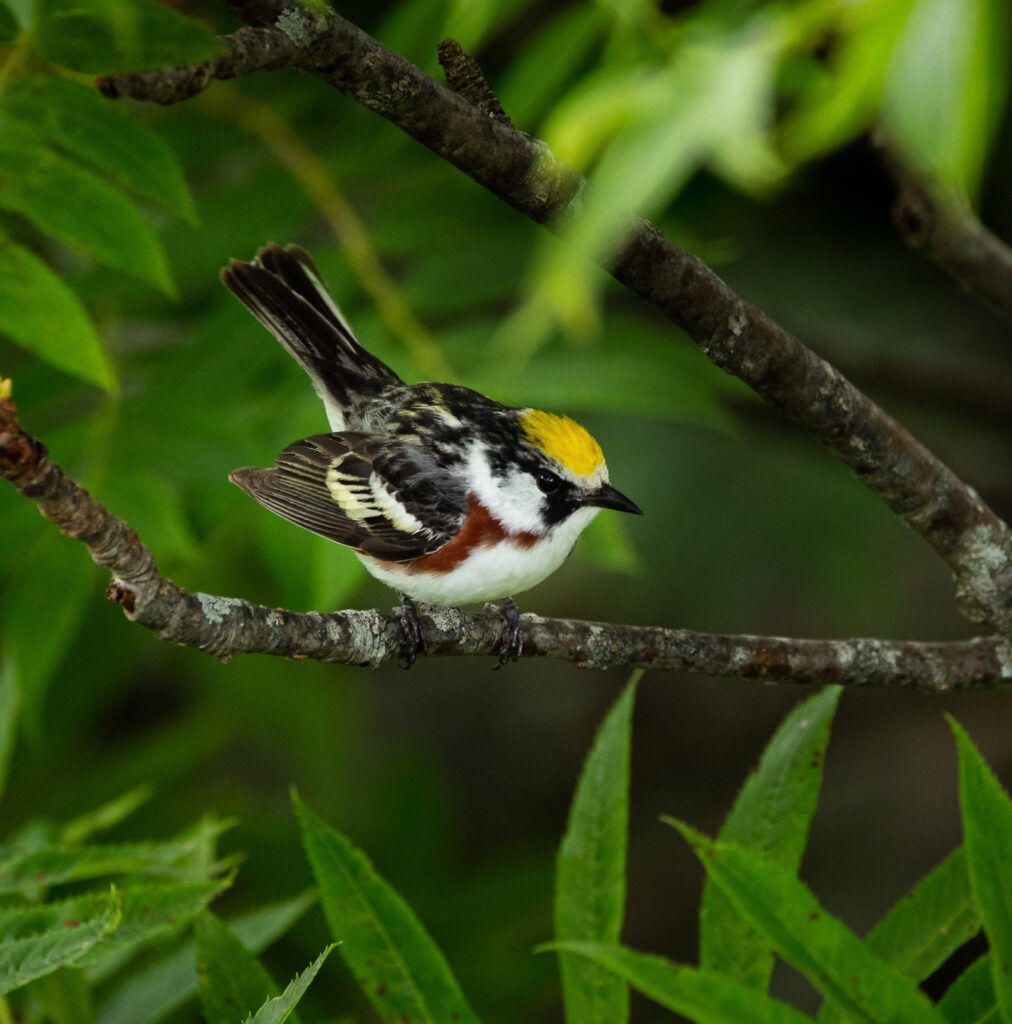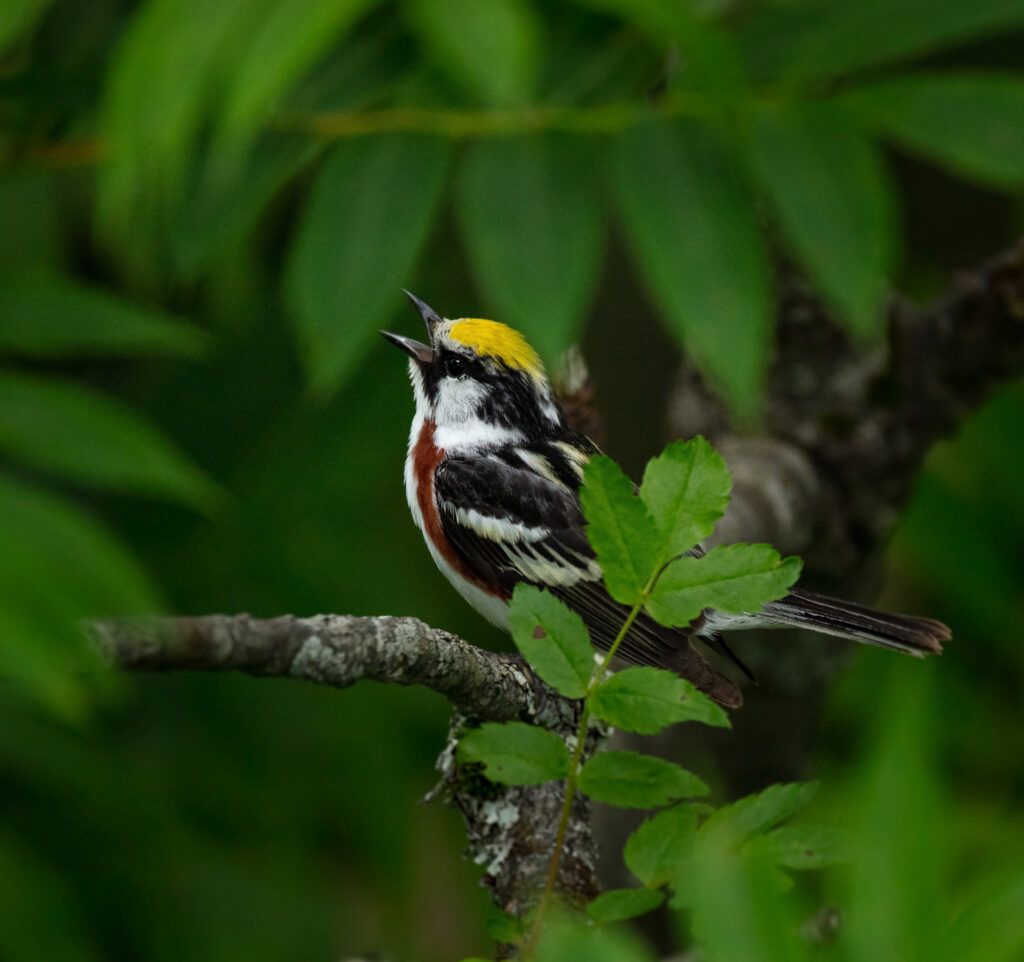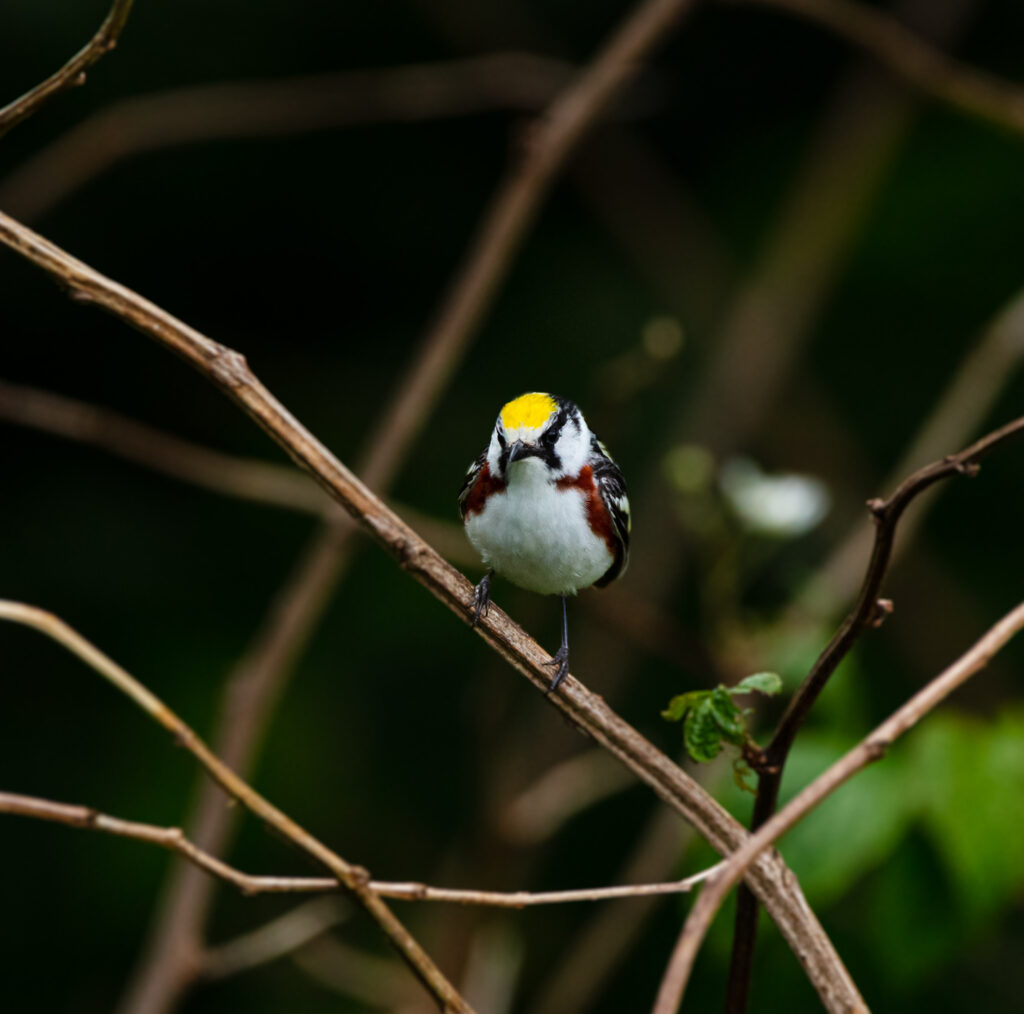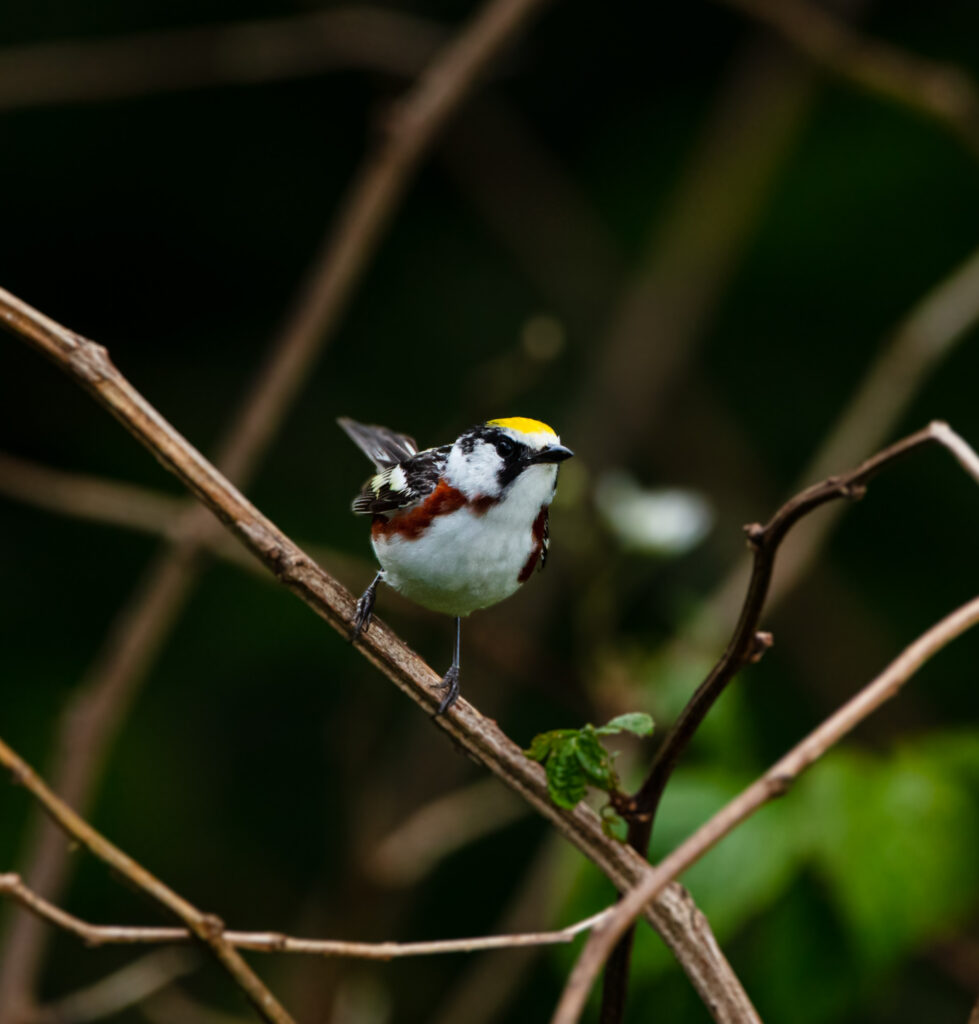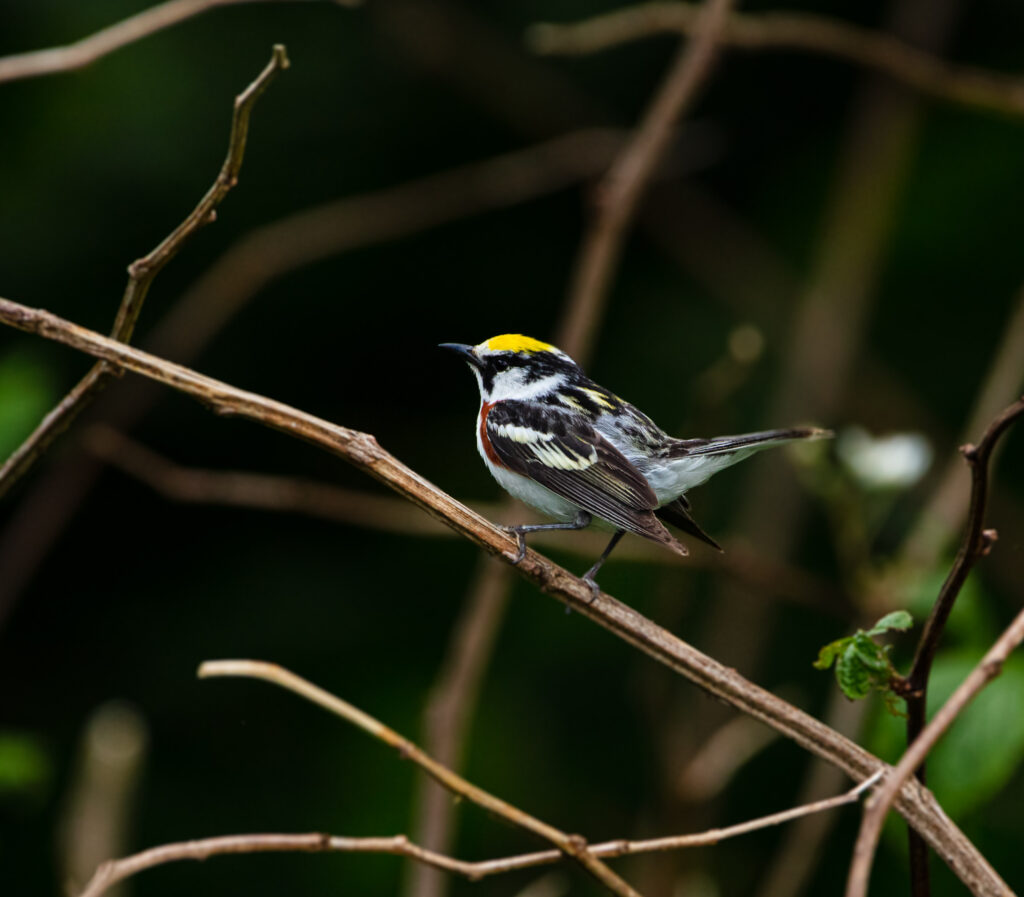Tag Archives: warblers nc
A Northern Parula at Yates Mills Park
While birding at Yates Mill Park, I heard a familiar sound coming from the trees.
“Zzzeee-ssup”…
I smiled and raised my camera and twisted the ring on my lens zooming in to search the branches for the bird responsible for the song.
Zzzeeee-ssup!
There it was, a male Northern Parula singing his little heart out in the mid canopy of a nearby tree.

It was cloudy and a little dark on this morning so I had to hurry to set my cameras exposure & ISO to brighten the scene in order to catch a few photos of this marvelous feathered gem before he disappeared into the leaves.
I pursed my lips and gave out a quick “pish, pishshsh” call to coax the little bird out from behind a leaf.
From there, I had just a few seconds to snap off some shots as he popped out onto an unobscured branch, looked me over, them called back at me.
Zzzeeee-ssup!
Swipe to the second photo to see him in full song, tongue out and all lol!
The Northern Parula is a somewhat common sight here in central North Carolina. These are the smallest species of eastern wood-warbler and although it is an energetic (and kind of noisy) bird, their habit of foraging in the high canopy of trees makes it a difficult Warbler to observe.
Look for them in deciduous forests, bogs, swampy areas and anywhere there is water nearby. They are best located by listening for that distinctive call overhead.
Northern Parulas will stick around the Triangle through mid October so there is still plenty of time to see them. Get out there and enjoy them while you can!
Photos by @sally_siko of @birdwatching_nc on the fabulous full frame SLR, the @canonusa
#5Ds
Chestnut- sided warblers on the Blue Ridge Parkway
Another great summertime bird to find off of the Blue Ridge Parkway is the Chestnut- sided Warbler. These friendly, brightly colored birds live in dense habitats including old fields, shrubby areas, cut over woodlands, and stream-side thickets. Here in western N.C., they are found at the higher elevations of the Blue Ridge Mountains foraging for insects in the rhododendron patches.
Like the Canada Warbler, they’re quite curious about people and will fly in quite close to see what we are doing. I had no trouble at all trying to get a good look at this one as he foraged in the brush after tiny insects.
Chestnut-sided Warblers hunt for food by flitting between branches of shrubs and small trees, finding their six legged prey among leaves and twigs. Every now and again they’ll dart out of the brush to catch flying insects in midair.
Primarily they tend to nest to the north in New England however their breeding range does extend south down the spine of the Appalachian mountains. They hide their nests low in dense shrubs, blackberry tangles, rhododendron stands, or even in young saplings of alder, maple, and other hardwood shrubs and trees.
They are commonly found between 3500-5000 feet along the Blue Ridge Parkway throughout May and June and will stick around until the first week of October before migrating south to Central America to spend the winter.
You’ve still got plenty time to go see them this year so get out there if you can 🙂 Photos by @sally_siko of @birdwatching_nc on the full frame beast @canonusa#5ds









